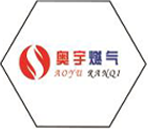
Nov . 09, 2024 01:22
Back to list
Pressure Relief Valve Functionality and Applications in Industrial Systems
Understanding Pressure Relief Valves Importance and Applications
Pressure relief valves (PRVs) play a crucial role in various industrial applications. These safety devices are designed to protect equipment and ensure the safety of personnel by relieving excess pressure in piping systems, pressure vessels, and boilers. When the pressure within a system exceeds a predetermined limit, PRVs automatically open to allow the excess pressure to escape, thus avoiding potential catastrophic failures.
What are Pressure Relief Valves?
A pressure relief valve is a mechanical device that automatically releases a substance from a boiler, pressure vessel, or piping system when the pressure or temperature exceeds preset levels. These valves serve two main functions protecting equipment from overpressure and maintaining system pressure within safe operational limits. Essentially, they act as a safety barrier, preventing dangerous situations that could lead to explosions, equipment damage, or harm to personnel.
How Do Pressure Relief Valves Work?
PRVs operate using a simple yet effective principle. They are typically designed with a spring-loaded mechanism that holds the valve closed under normal operating pressure. When the internal pressure rises beyond the set point, the force exerted by the pressure overcomes the spring tension, causing the valve to open. This process allows the excess pressure to vent safely, after which the valve closes again when the pressure drops back within the safe operating range.
There are several types of pressure relief valves, including
1. Spring-loaded Relief Valves These are the most common type, using a spring mechanism to maintain valve closure until the set pressure is reached. 2. Pilot-operated Relief Valves These utilize a small pilot valve that controls a larger valve, often providing more precise pressure control and allowing for higher set pressure levels.
.
Importance of Pressure Relief Valves
صمامات تخفيف الضغط

The significance of PRVs cannot be overstated. In industries such as oil and gas, chemical manufacturing, and power generation, equipment operates under extremely high pressures. Without adequate pressure relief, the risks include explosions, equipment failure, and significant financial losses. Furthermore, regulatory agencies mandate the use of PRVs in many applications to ensure compliance with safety standards.
In addition to protecting physical assets, PRVs also play a crucial role in environmental protection. By preventing pressure-related accidents, these valves help mitigate the risk of hazardous material releases that could lead to environmental contamination.
Applications of Pressure Relief Valves
Pressure relief valves are used in a wide range of applications, including
- Boilers and Pressure Vessels Ensuring that steam and other gases do not exceed safe pressure limits. - Petrochemical Processes Protecting reactors and storage vessels in the chemical industry from overpressure situations.
- Natural Gas Pipelines Maintaining safe pressure levels in the transportation of natural gas.
- Water and Wastewater Systems Regulating pressure in pipeline networks to prevent system failures.
Conclusion
In summary, pressure relief valves are essential components in many industrial systems, ensuring safety and efficiency. By providing a mechanism to control and relieve excess pressure, they help prevent potentially disastrous outcomes. Understanding their operation, importance, and applications can aid industries in making informed decisions about equipment safety and compliance. Investing in quality PRVs is a step towards ensuring a safe working environment, thus safeguarding both personnel and infrastructure.
Latest news
-
Safety Valve Spring-Loaded Design Overpressure ProtectionNewsJul.25,2025
-
Precision Voltage Regulator AC5 Accuracy Grade PerformanceNewsJul.25,2025
-
Natural Gas Pressure Regulating Skid Industrial Pipeline ApplicationsNewsJul.25,2025
-
Natural Gas Filter Stainless Steel Mesh Element DesignNewsJul.25,2025
-
Gas Pressure Regulator Valve Direct-Acting Spring-Loaded DesignNewsJul.25,2025
-
Decompression Equipment Multi-Stage Heat Exchange System DesignNewsJul.25,2025

